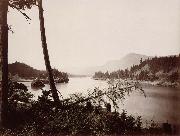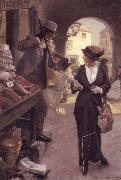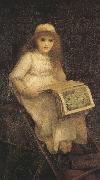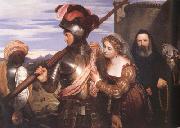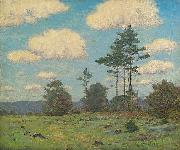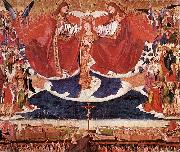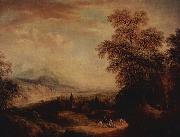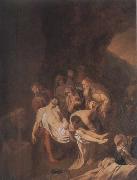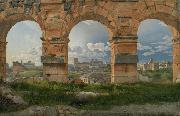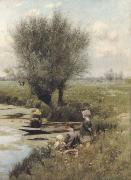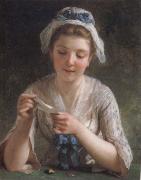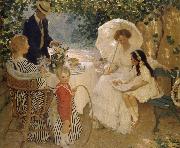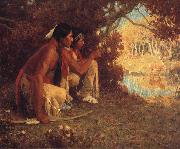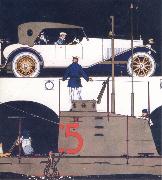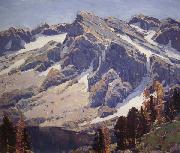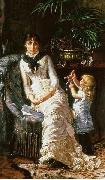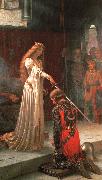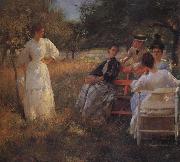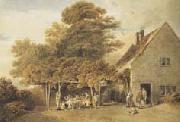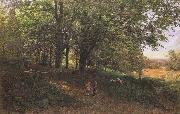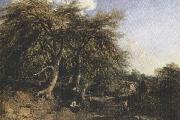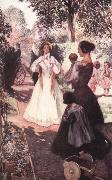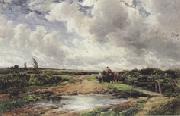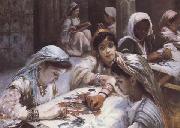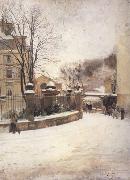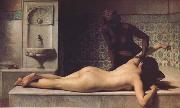|
|
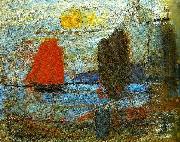 |
carl kylberg
|
|
Carl Oscar Kylberg, född 23 september 1878 på Vasängen i Fridene församling, död 6 januari 1952 i Stockholm, svensk konstnär och representant för Göteborgskoloristerna.
Carl Kylberg var son till kontorschef Gustaf Kylberg och friherrinnan Eleonora von Essen och storebror till konstnären Erik Kylberg. Hans fastrar och farbror var konstnärerna Regina Kylberg-Bobeck, Marina Kylberg och Hjalmar Kylberg. Farfadern Lars Wilhelm Kylberg var konstnär vid sidan av lantbruket på familjegodset Såtenäs i Västergötland.
Kylberg studerade först vid tekniska skolan i Stockholm och i Berlin för att bli arkitekt men övergick till måleri omkring 1900. Han studerade under en tid vid Valand i Göteborg som elev till Carl Wilhelmson. Hans verk kännetecknas ofta av ett glödande oljemåleri med starka färger och han avbildade ofta landskap och figurkompositioner på ett avskalat man??r. Under senare delen av sitt konstnärskap skapade han en mängd religiösa motiv.
Kring 1930-talet fick han sitt genombrott och han kom att ställa ut, förutom i Sverige även i Köpenhamn, Paris, London, Budapest och i USA men hans måleri var för många provocerande och 1938 gick regeringen in och stoppade ett köp av målningen Uppbrottet för Nationalmuseum i Stockholm.
En av hans mest välkända målningar är Hemkomsten från 1938 som hänger på Göteborgs konstmuseum och som föreställer ett skepp i silhuett mot en nästan brinnande gul himmel och ett rödfärgat hav. Denna målning förevigades också 1978 på ett svenskt frimärke av valören 90 öre.
Sedan 1980-talet har många av hans tavlor sålts för rekordpriser vid olika internationella konstauktioner.
|
|
|
|
|
|
|
|
 |
charles emile callande
|
|
1797-183
Charles-Emile-Callande de Champmartin (Bourges, 1797 -Paris,1883) was a French painter.
His numerous portraits, historical and religious pictures were very popular. |
|
|
|
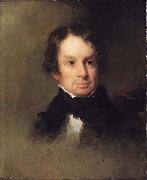 |
Charles Loring Elliott
|
|
1812-1868.
Elliott was born at Auburn, New York in the central part of the state. He began working as a painter in his region. After 10 years, he moved to New York City to study art under the painters John Trumbull and John Quidor, as well as to be in a bigger market for work.
After practicing portrait painting in central New York State for 10 years, Elliott took up residence in New York City in 1845. The following year he was elected to the National Academy of Design, which was a measure of recognition and helped him attract more clients.
Painting by Elliott of Samuel Putnam Avery, 1863Elliott was considered the best portraitist of his day. Although he never studied abroad, his technique is neither provincial nor uncertain. His method is mature, his drawing firm, his color fresh and clean, and his likenesses excellent, though somewhat lacking in sentiment.He was said to have painted over 700 portraits, mostly heads, as he had little idea of the composition of large canvases. He also painted figure pieces, including Don Quijote and Falstaff, and one landscape, The Head of Skaneateles Lake. |
|
|
|
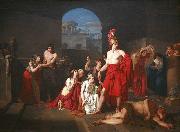 |
Charles-edouard Chaise
|
|
(1759, Paris - 1798, Fontainebleau) was a French neoclassical painter.
His father was a painter, art dealer and member of the Academie de Saint-Luc. Charles-Edouard studied under Jean Bonvoisin in 1775, then under Jean-Jacques Lagrenee, before winning second prize in the 1778 prix de Rome with David condemning to death the Amalekite bringing him Saul's diadem.
|
|
|
|
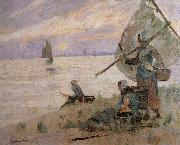 |
Chigot Eugene
|
|
French history painter and marine specialist , 1860-1890
|
|
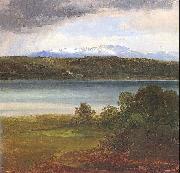 |
Christian Ernst Bernhard Morgenstern
|
|
(29 September 1805 - 12 Februar 1867) was a German landscape painter. Morgenstern is regarded as one of the pioneers in Germany of early Realism in painting. He gained this reputation in Hamburg 1826-1829 together with his contemporary Adolph Friedrich Vollmer while both were still studying; from 1830 onwards, Morgenstern, together with Friedrich Wasmann, Johan Christian Dahl and Adolph Menzel, introduced Munich to Realist painting.
Morgenstern was born in Hamburg as one of six children to a painter of miniatures, Johann Heinrich Morgenstern (1769-1813). After the early death of his father he was placed as an apprentice in the graphic workshop of the brothers Suhr. Cornelius Suhr took the young Morgenstern as his servant on a two-year journey through Germany to publicise the panorama prints which the brothers Suhr produced. 1822 followed another long journey to St. Petersburg, where they stayed for a year and to Moscow. On their return to Hamburg Morgenstern succeeded in leaving Suhr (Vollmer took his place). He became a student of the Hamburg painter Siegfried Bendixen with whom he stayed from 1824 to 1827, then continued his studies at the Royal Danish Academy of Fine Arts in Copenhagen (1827-1828) and undertook study journeys through Sweden and Norway. Bendixen introduced him to the wealthy aristocrat and supporter of the arts, Carl Friedrich von Rumohr, patron to many young Hamburg artists, on whose estate in Holstein he spent several summers. In 1830 Morgenstern went to Munich on Ruhmor's advice. He settled there permanently while undertaking extensive yearly study trips: for the first years through Bavaria, then in the summer of 1836 and in the following summers to the Alsace as guest of a patron of the arts. The winter 1839/40 he returned to Hamburg to stay with his mother. In 1841 he visited Venice and Trieste together with the landscape painter Eduard Schleich and in 1843, and again in 1846 the central Alps. In the summer of 1850 he stayed on Heligoland. |
|
|
|
|
|
|
|
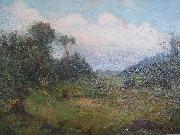 |
Creator:Edmond Dyonnet
|
|
He was born on 25 June 1859 in Crest (Drôme), France, from the marriage of Ulysses-Alexandre Dyonnet, industrialist, and Goullioud Albine. The real family name is Guyonnet de Pivat but due to an error of births during the French Revolution, the surname became Dyonnet. Edmond died in Montreal on 7 July 1954, at age 95. He was buried with his family in the cemetery of Notre-Dame-des-Neiges, in Montreal.
Edmond had two younger sisters, Emma Dyonnet, wife Lorin (1866-1947) and Clemence Dyonnet, wife Chabot (18? -1905). Ulysses, the father of Edmond, had an older brother Leon Dyonnet Goullioud who married Helen, the sister of Albine. Leon Dyonnet made a fortune in corsets for women in association with Amyot from 1886 to 1891 and set up the Dominion Corset company, rue de la Couronne in Quebec City. The couple had a daughter artist, cousin of Edmond Dyonnet: Eugenie Dyonnet, who immigrated to Canada in 1872 and died in 1875 in Montreal.
Edmond Dyonnet was born in Drôme in 1859, and at 9 years old, he followed his father and migrated to Italy, he continued his primary education in Turin, from 1868 to 1873, in municipal schools and then returned to France with his family in the Drôme. He studies at Crest high school from 1873 to 1875. His father Ulysses met in Paris the brother of Judge George Baby who convinced him to emigrate to Quebec.
|
|
|
|
|
|
|
|
 |
DeScott Evans
|
|
born David Scott Evans (March 28, 1847-July 4, 1898) was an American artist who worked in Indiana, Ohio and New York. He was known for portraits, still lifes, landscapes and other genres.
Born in Boston, Indiana to David S. and Nancy A. (Davenport) Evans. His father was a physician. Evans changed his signature to D. Scott Evans and later to De Scott Evans. He also signed paintings with the names David Scott, S. S. David, and Stanley S. David. He attended Miami University's preparatory school in the 1860s, studying with professor Adrian Beaugureau at Miami and later in Cincinnati. Evans married Alice Josephine Burk in 1872. They had two biological daughters, Mabel and Nancy, and an adopted daughter, Laura.
In 1873, he became head of the art department at Mount Union College and after several terms there, he moved to Cleveland to teach and to paint. From Cleveland, he moved to New York. He died along with 500 other passengers and crew, including his three daughters when the French steamer La Bourgogne was rammed by a sailing ship in July 1898. His wife was not on board and later remarried.
Though he died at sea, there is a cenotaph for Evans and his daughters in the Oxford Cemetery in Oxford, Ohio.
|
|
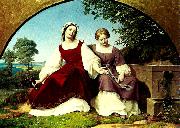 |
e. j. f. bendemann
|
|
Eduard Julius Friedrich Bendemann (3 December 1811, Berlin - 27 December 1889, Dusseldorf) was a German painter.
Bendemann was born in Berlin. His father, Anton Heinrich Bendemann, a Jewish banker, monitored his education closely; it was one that would have naturally led him to some sort of technical occupation, but his talent and propensity towards art resulted in his being allowed to pursue other interests. His mother Fanny Eleonore Bendemann nee von Halle, also a daughter of the Jewish banker Joel Samuel von Halle.
After he completed elementary school he enrolled in the Wilhelm von Schadow's School in Dusseldorf. In 1830 he went on a school trip to Italy. After a series of jobs, among them with Boas and Ruth, his talent as an artist began to show, especially with his very large 1832 painting titled, The Sad Jews of Babylon which was featured in the Berlin art exhibition. The picture garnered a great deal of attention, which was in part due to the deep and simple feeling and the noble composition of the piece (museum in Cologne). Bendemanns second picture: The Two Girls at the Well (1832), was acquired by the North Rhine-Westphalia art association.
Soon thereafter followed Jeremias on the Ruins of Jerusalem for which the artist received a medal in Paris in 1837. This painting was for the most part about the progress of the Jews in Babylon. (Royal Palace in Hanover). His best known work is The Harvest.
The artist's first fresco was a symbolic representation of the art at the Poetry Well at the house of his parents-in-law in Berlin. In the year 1838 he was appointed professor of the academy of arts in Dresden, where he had the opportunity to paint even larger frescos. Bendemann was given the task to decorate three halls of the Dresden royal palace, the throne room, the tower room, and the tower hall with wall paintings. In the throne room, on both sides of the throne, there are representations of important rulers and legislators in gold leaf with smaller representations in relief form below, from Moses up to Albrecht III, the King at the time. On the wall facing the throne there are four paintings depicting events from the life of King Heinrich I each with other pictures attached which explain each of the four events. Bendemann died in Dusseldorf. |
|
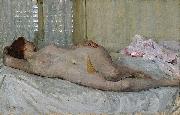 |
E. Phillips Fox
|
|
Emanuel Phillips Fox (1865-1915) was an Australian Naturalist painter.
|
|
|
|
|
|
|
|
|
|
|
|
|
|
 |
Ebenezer Colls
|
|
(1812- 1887 ) - Painter
painted Sailboats in a squall in |
|
 |
Ecce Homo
|
|
are the Latin words used by Pontius Pilate in the Vulgate translation of the John 19:5, when he presents a scourged Jesus Christ, bound and crowned with thorns, to a hostile crowd shortly before his Crucifixion. The King James Version translates the phrase into English as Behold the Man. The scene is widely depicted in Christian art.
The Ecce homo is a standard component of cycles illustrating the Passion and Life of Christ in art. It follows the Flagellation of Christ, the Crowning with thorns and the Mocking of Christ, the last two often being combined. The usual depiction shows Pilate and Christ, the mocking crowd and parts of the city of Jerusalem.
But, from the 15th century, devotional pictures began to portray Jesus alone, in half or full figure with a purple robe, loincloth, crown of thorns and torture wounds, especially on his head. Similar subjects but with the wounds of the crucifixion visible (Nail wounds on the limbs, spear wounds on the sides), are termed a Man of Sorrow(s) (also Misericordia). If the "Instruments of the Passion" are present, it may be called an Arma Christi. If Christ is sitting down (usually supporting himself with his hand on his thigh), it may be referred to it as Christ at rest or Pensive Christ. It is not always possible to distinguish these subjects.
|
|
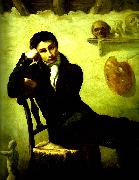 |
ecole francaise
|
|
Founded in 1846, the EfA is the oldest foreign institute in Athens. Its early foundation, still a source of considerable prestige, is to be seen culturally connected with French philhellenism and politically with the French East Mediterranean strategy of the time.
|
|
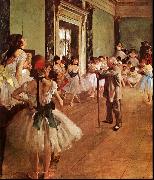 |
Edgar Degas
|
|
French Realist/Impressionist Painter and Sculptor, 1834-1917 |
|
|
|
|
|
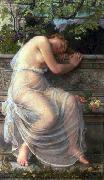 |
Edith Corbet
|
|
(28 December 1846 Goulburn, New South Wales - 1920 Hampstead), was a Victorian landscape painter, having close associations with the Macchiaioli group (also known as the Tuscans or Etruscans), who, in a break with tradition, painted outdoors in order to capture natural light effects and favoured a panoramic format for their paintings.
Edith was born in Goulburn, New South Wales, Australia, the second daughter and fifth child of Henry Edenborough and Margaret Stedman. The Edenborough family came from Leicestershire, but relocated to London, where they became prosperous merchants in hosiery and silk. Henry Edenborough was a sea captain and made several voyages to Australia between 1833 and 1837, deciding to settle there in 1840. He acquired a farm south of Goulburn known as 'Wollogorang' and built "a handsome two-storey brick and stone rubble building notable for its interesting French windows and its impressive outbuildings". This was the family home until 1854 when Henry and Margaret sold the property to John William Chisholm, and returned to England with their family of six children. Henry died in 1855 at Chesham Lodge in Surrey, aged 43. In 1861 the British census records show Edith, 14 years old, living with her widowed mother in Kensington. The 1871 census shows her living with her sister Annie, noted as head of household, at 5 Sheffield Gardens in Kensington, in which year she was exhibiting her work in London.
She married the painter Arthur Murch and moved to Rome where she painted with Giovanni Costa, leader of the Macchiaioli group. In 1876 they both stayed in Venice. Olivia Rossetti Agresti wrote: "Costa had a very high opinion of this artist's gifts and used to remember with pleasure how on that occasion they used to go out together to paint from nature at Fusino" (Agresti, 1904).
Edith Murch frequently exhibited from 1880 to 1890 at the Grosvenor Gallery and the New Gallery. In 1891 she married Matthew Ridley Corbet, one of the Macchiaioli group's leading members, after which she exhibited mainly at the Royal Academy, visiting Italy and living in London for the remainder of her life.
|
|
|
|
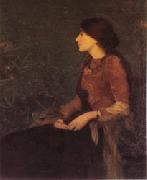 |
Edmond Aman-Jean
|
|
(1858 - 1936) was a French symbolist painter, who founded the Salon des Tuileries. It is also noted that he was a friend of Georges Seurat. |
|
|
|
|
|
|
|
|
|
|
|
|
|
|
|
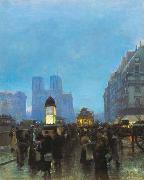 |
Edmund Tull
|
|
(1870 - 1911) was a Hungarian artist born at Szekesfeherver. He was educated at Budapest, Milan, and Paris, being in the last-named city a pupil of J. P. Laurens and of B. Constant. His first work, "The Cathedral of Notre Dame," attracted attention at the exposition in Budapest in 1896, while his etchings are especially valued in London and Vienna. His best-known works are: "Peasant Mowing," "A Lane in Dort," and "The Island of Capri," in the historical art museum of Budapest; and "The Smithy," owned by Archduchess Isabella.
|
|
|
|
|
|
|
|
|
|
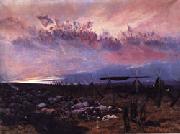 |
Edouard Detaille
|
|
(October 5, 1848 - December 23, 1912), was a French Academic painter and military artist noted for his precision and realistic detail.
Detaille was a student of Jean-Louis-Ernest Meissonier. He served in the French Army in the Franco-Prussian War of 1870-1871 and became the official painter of the battles. He is famous for his portraits of soldiers and depictions of military manoeuvres, military uniforms and general military life. |
|
|








